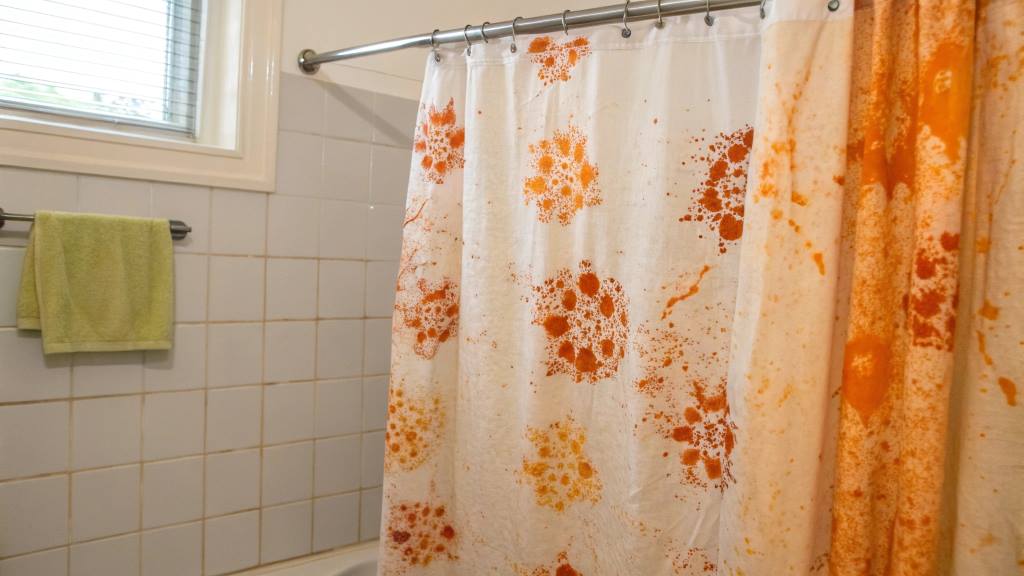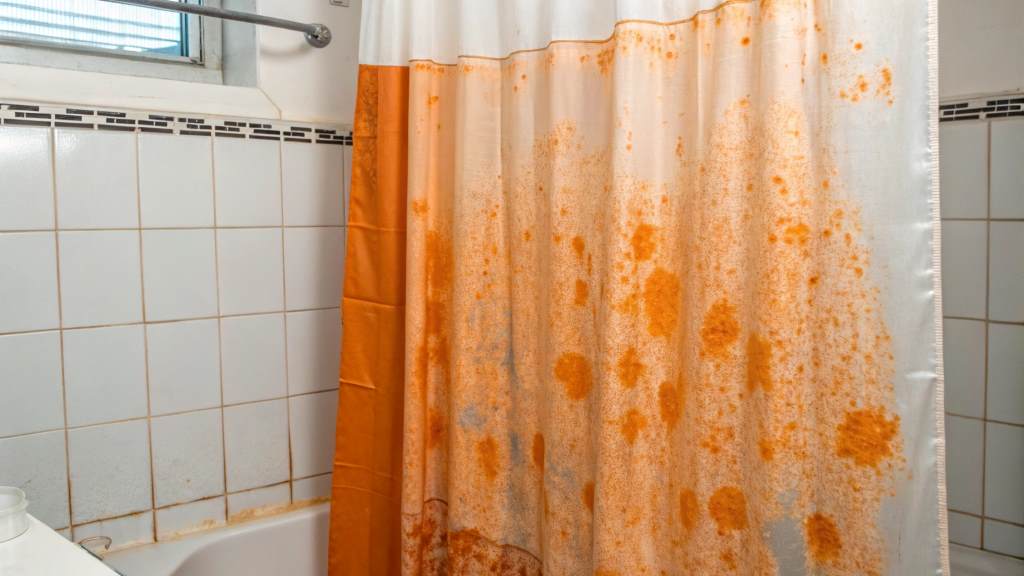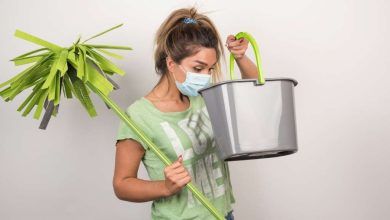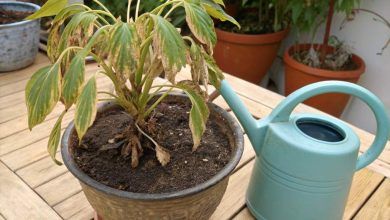
Why Is My Shower Curtain Turning Orange? The Hidden Causes and Proven Fixes
If you’ve ever stepped into your bathroom and noticed your shower curtain turning orange, you’re not alone. Many homeowners face this frustrating issue, and it’s not just an aesthetic problem. These stains can be caused by mold, mildew, hard water, or even bacteria thriving in your bathroom environment. The good news is that there are effective ways to clean your shower curtain and prevent the orange buildup from returning.
The Main Causes of an Orange Shower Curtain
1. Hard Water and Mineral Buildup
One of the most common culprits behind an orange shower curtain is hard water. Hard water contains high levels of minerals like iron and calcium. When water evaporates, it leaves behind mineral deposits that can appear as an orange or rusty stain. The standard door height in most homes is typically 80 inches (6 feet 8 inches), which is a common measurement for interior doors.
According to the U.S. Geological Survey, about 85% of homes in the United States have hard water. If your water supply contains iron, it can oxidize when exposed to oxygen, leading to those stubborn orange stains.
Solution:
- Install a water softener to remove excess minerals from your water supply.
- Use a showerhead filter designed to reduce iron and other minerals.
- Regularly clean your shower curtain to prevent buildup.
2. Mold and Mildew Growth
Bathrooms provide the perfect environment for mold and mildew to thrive—high humidity, warmth, and moisture. Some mold species, particularly Serratia marcescens, produce an orange-pink biofilm that can stain your shower curtain.
A 2022 study published in the Journal of Applied Microbiology found that mold spores can multiply within 24-48 hours in damp conditions. If your bathroom lacks proper ventilation, moisture lingers, making your shower curtain an easy target for mold growth.
Solution:
- Keep your bathroom well-ventilated by using an exhaust fan or opening a window.
- Dry your shower curtain after each use to prevent moisture buildup.
- Wash your curtain regularly with mold-killing agents like white vinegar or hydrogen peroxide.
3. Soap Scum and Residue
Soap scum is another major reason for orange discoloration. When soap mixes with hard water, it forms a filmy layer on surfaces, which can trap dirt, bacteria, and even mold. Over time, this buildup can take on an orange or brownish tint.
Solution:
- Use liquid body wash instead of bar soap, as it leaves less residue.
- Wipe down your shower curtain weekly to remove soap buildup.
- Switch to a soap scum remover to break down tough stains.
4. Bacteria Growth in Your Bathroom
If your orange stains are slimy and appear in streaks, bacteria might be to blame. Serratia marcescens, a common airborne bacteria, thrives in damp environments. This bacteria isn’t dangerous for most people, but it can cause persistent stains that are tough to remove.
Solution:
- Disinfect your shower and curtain regularly with a bleach solution.
- Dry all surfaces thoroughly to prevent bacterial growth.
- Wash bath towels and shower curtains frequently to reduce bacteria transfer.
How to Remove Orange Stains From Your Shower Curtain
When considering storm doors, they are typically made from materials such as aluminum, fiberglass, or wood. Aluminum is lightweight and resistant to rust, fiberglass offers durability and energy efficiency, and wood provides a classic aesthetic but requires more maintenance.
1. Vinegar and Baking Soda Solution
White vinegar is a natural disinfectant, while baking soda acts as a gentle abrasive.
Steps:
- Fill a bathtub with warm water and add 1 cup of white vinegar.
- Soak the curtain for 30 minutes.
- Sprinkle baking soda directly on stains and scrub with a brush.
- Rinse thoroughly and hang to dry.
2. Hydrogen Peroxide and Dish Soap
Hydrogen peroxide is an excellent mold and bacteria killer.
Steps:
- Mix equal parts hydrogen peroxide and dish soap.
- Apply the solution to the stains and let it sit for 10 minutes.
- Scrub with a sponge and rinse thoroughly.
3. Bleach for Stubborn Stains
Bleach is highly effective for killing mold and bacteria.
Steps:
- Mix 1/4 cup of bleach with 1 gallon of water.
- Submerge the curtain for 15 minutes.
- Rinse thoroughly and dry.
How to Prevent Your Shower Curtain From Turning Orange
- Use a mildew-resistant shower curtain: Look for curtains made from PEVA or polyester, which resist mold better than fabric ones.
- Improve ventilation: Keep your bathroom fan on during and after showers.
- Squeegee or dry surfaces: Remove excess moisture from your shower area daily.
- Wash your curtain regularly: Clean it at least once a month to prevent buildup.
- Install a water softener: This will reduce mineral deposits that cause orange stains.
FAQs
1. Can an orange shower curtain be harmful to my health?
Most orange stains are caused by mold or bacteria, which can trigger allergies or respiratory issues if left unchecked.
2. Will a fabric shower curtain get orange stains too?
Yes, but plastic curtains are more prone to orange stains because they trap moisture more easily.
3. Can I wash my shower curtain in the washing machine?
Yes. Use warm water, a mild detergent, and add vinegar or baking soda for better stain removal.
4. How often should I replace my shower curtain?
Replace it every 6 to 12 months, depending on maintenance and material.
5. Does hot water make orange stains worse?
Hot water can speed up bacteria growth and mineral buildup, so it’s best to keep your bathroom well-ventilated.
Conclusion
If your shower curtain is turning orange, hard water, mold, bacteria, or soap scum may be to blame. Hard water leaves mineral deposits, while bacteria and mold thrive in humid environments. The best way to stop these stains is to improve bathroom ventilation, clean your curtain regularly, and use mold-resistant materials. By following these tips, you can keep your shower curtain fresh and stain-free.








